What Is Content Optimization?
Content optimization is the process of improving and updating your website content to ensure it performs well.
The goal of content optimization is to keep your content fresh, accurate, and relevant, so it attracts more visitors and holds their interest.
By the end of this guide, you’ll know what you can do to enhance your content to get more traffic and conversions.
Why Is Content Optimization Important?
Content optimization can help your website appear higher in search engines and persuade users to take actions that support business goals.
If you optimize content continuously, you can keep driving results long after the content was first published.
For example, Semrush’s article on link building was published in December of 2022. And the article still gets around 4.5K monthly website visitors, according to our Organic Research tool.
That’s because it was updated both in August of 2023 and in April of 2024.
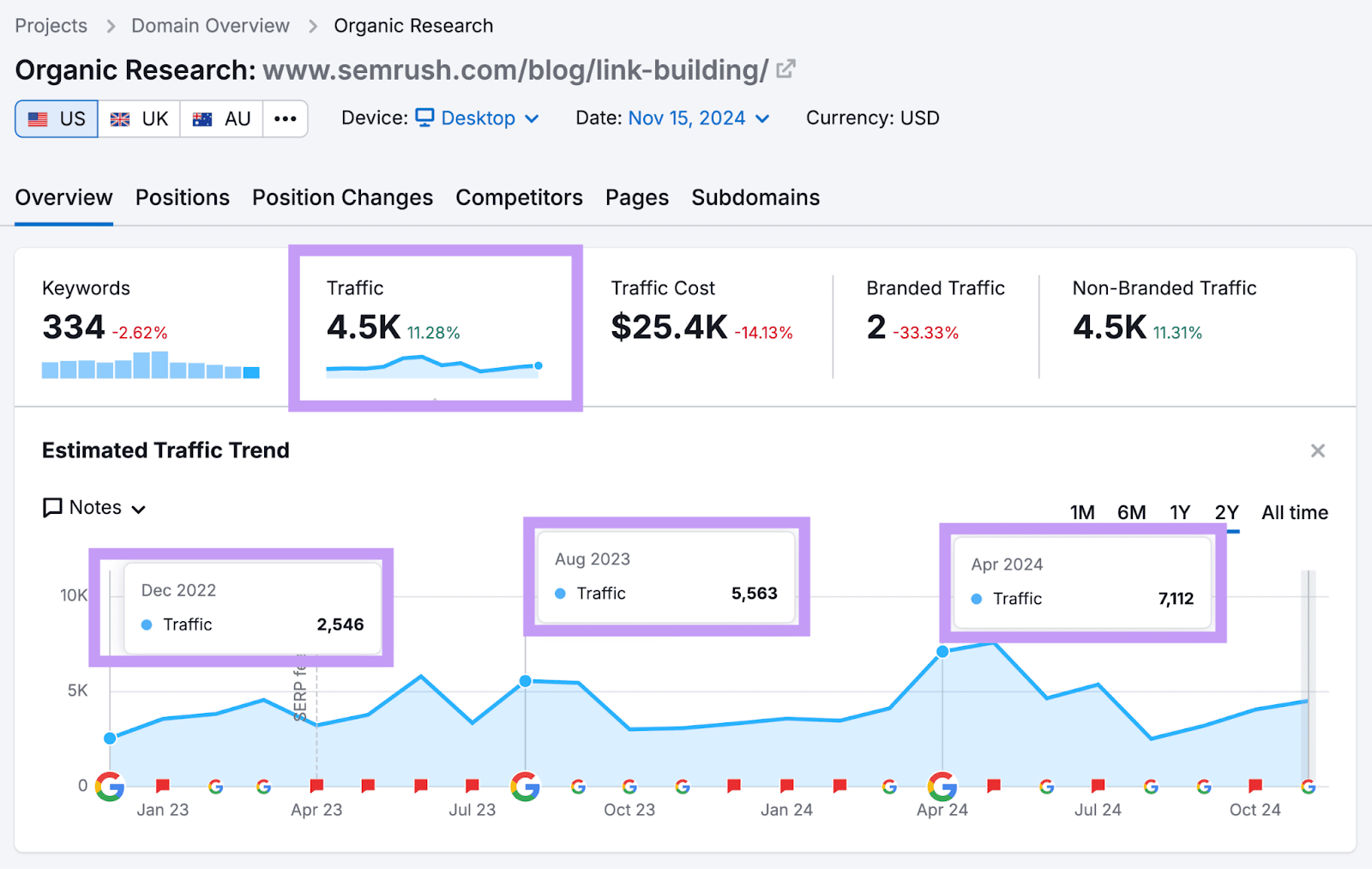
Some more specific reasons you should invest in content optimization include the following:
- It can improve search engine rankings. Optimizing your existing content can help it rank higher on search engine results pages (SERPs) for your target keywords.
- It can increase website traffic. Higher rankings make your content more visible, which can lead to more organic visitors to your site. And they might become leads or customers.
- It can maintain search engine rankings over time. Regularly optimizing your content with the latest insights can help maintain or even improve its search engine rankings.
- It can help you achieve a better return on investment (ROI). When marketing budgets are tight, optimizing old content is faster and more cost-effective than creating new content.
How to Optimize Content for SEO
Here’s a step-by-step guide to help you optimize your content for SEO:
1. Optimize Your Content to Meet Search Intent
Search intent is what users are trying to achieve when they enter a query in search engines, and search engines like Google want to satisfy that intent.
So, aligning your content with what searchers are actually looking for can improve its chances of ranking higher on results pages.
There are four types of search intent:
- Informational: The user is looking to learn more about a topic
- Transactional: The user is looking to make a purchase or complete a transaction
- Navigational: The user wants to find a specific website or page
- Commercial: The user is researching products or services to inform a decision

There are two ways to determine search intent.
The first way is simple: perform a search and analyze the results.
Enter your query into the search engine you want to rank on (e.g., Google) and look at the results.
For example, we entered “influencer marketing tools.”
As you can see from the titles, most results focus on tool lists and comparison guides. Which means the keyword has commercial and possibly informational intent.
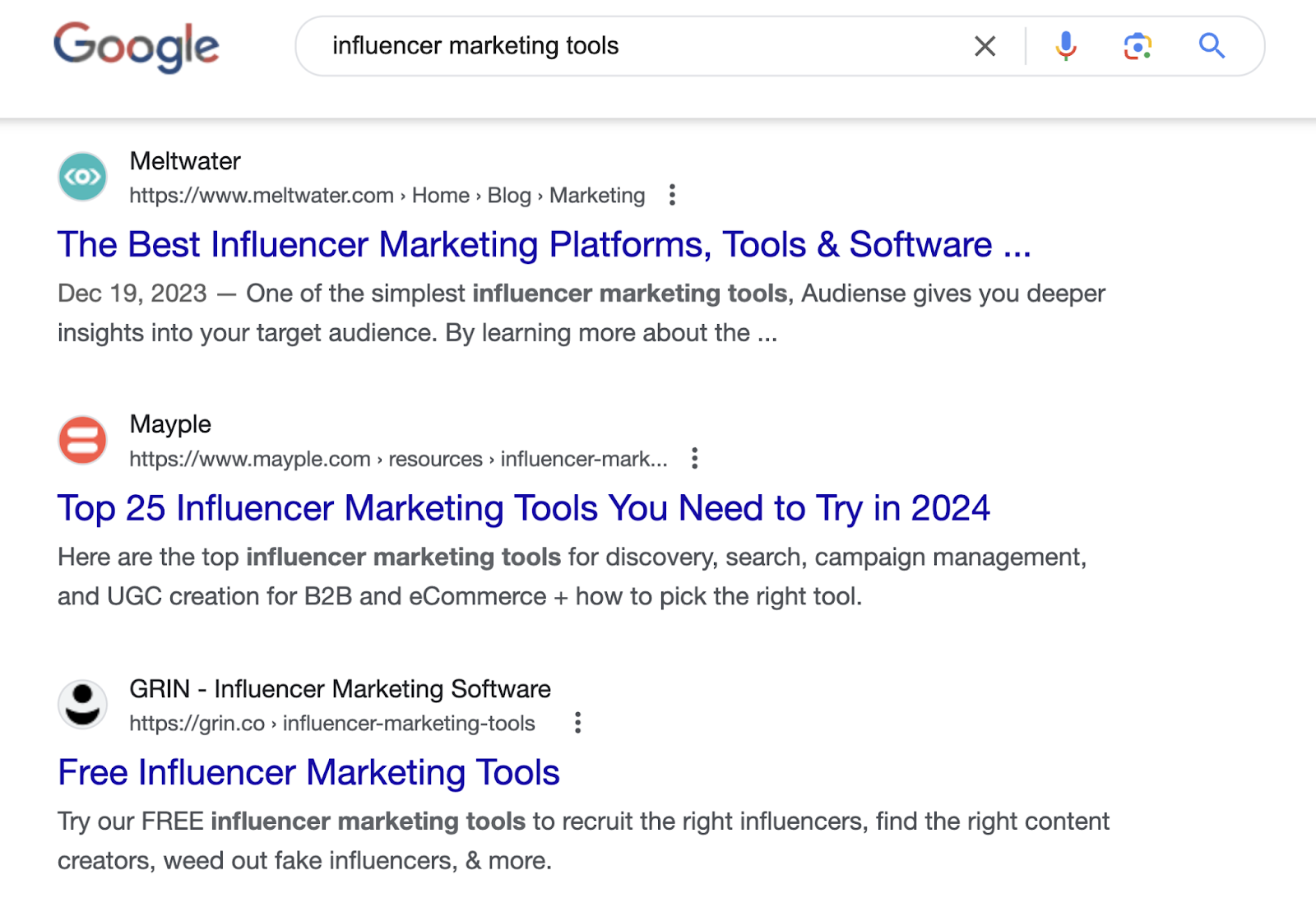
A quicker way to find search intent is with Semrush’s Keyword Overview tool.
Search for your target keyword using the tool. And look at the “Intent” box to find your keyword’s search intent.
For example, the intent for “influencer marketing tools” is both commercial and informational.
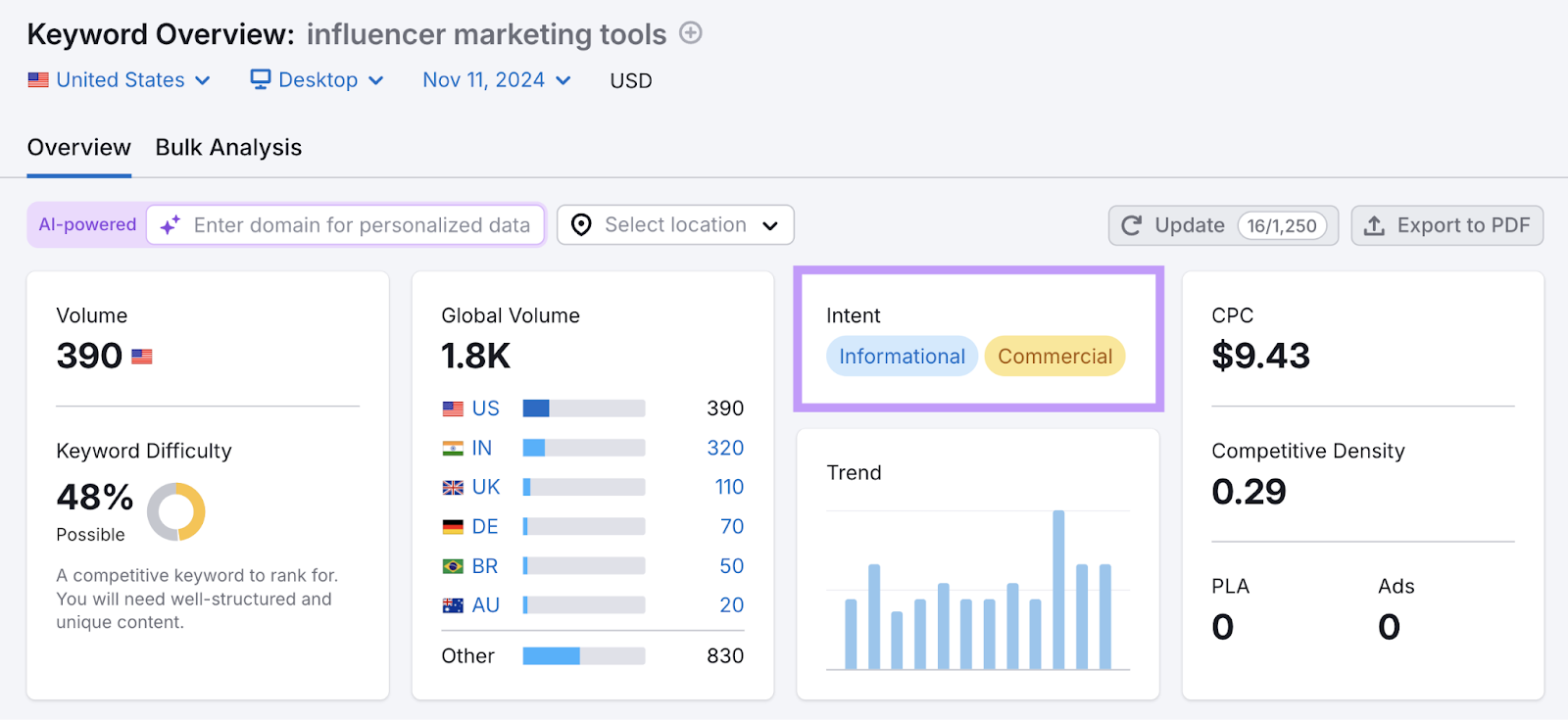
Now that you know your target keyword’s intent, make sure your content satisfies it.
For example, if your article targeting “influencer marketing tools” focuses heavily on explaining what these tools are, you may need to change your post’s structure.
Also keep in mind that what ranks best can change over time. So, make it a habit to regularly review the search intent of important keywords for your business. And tweak your content to keep it relevant.
2. Target Relevant Secondary Keywords
Target relevant secondary keywords by incorporating them naturally throughout your post to improve your content’s potential reach.
Each post should target a primary keyword (the main keyword you want to rank for) and multiple secondary keywords.
After all, ranking well for multiple, related keywords can allow you to reach more people and potentially increase your organic traffic.
Chances are, you’re already ranking for multiple secondary keywords. Since most content naturally ranks for more than one keyword.
But you can take it a step further by beingintentional about targeting secondary keywords with high traffic potential.
Here’s how to find secondary keywords with high traffic potential.
Use keyword research tools like Semrush’s Keyword Magic Tool.
To get started, launch the tool. And enter your primary keyword and click “Search.”
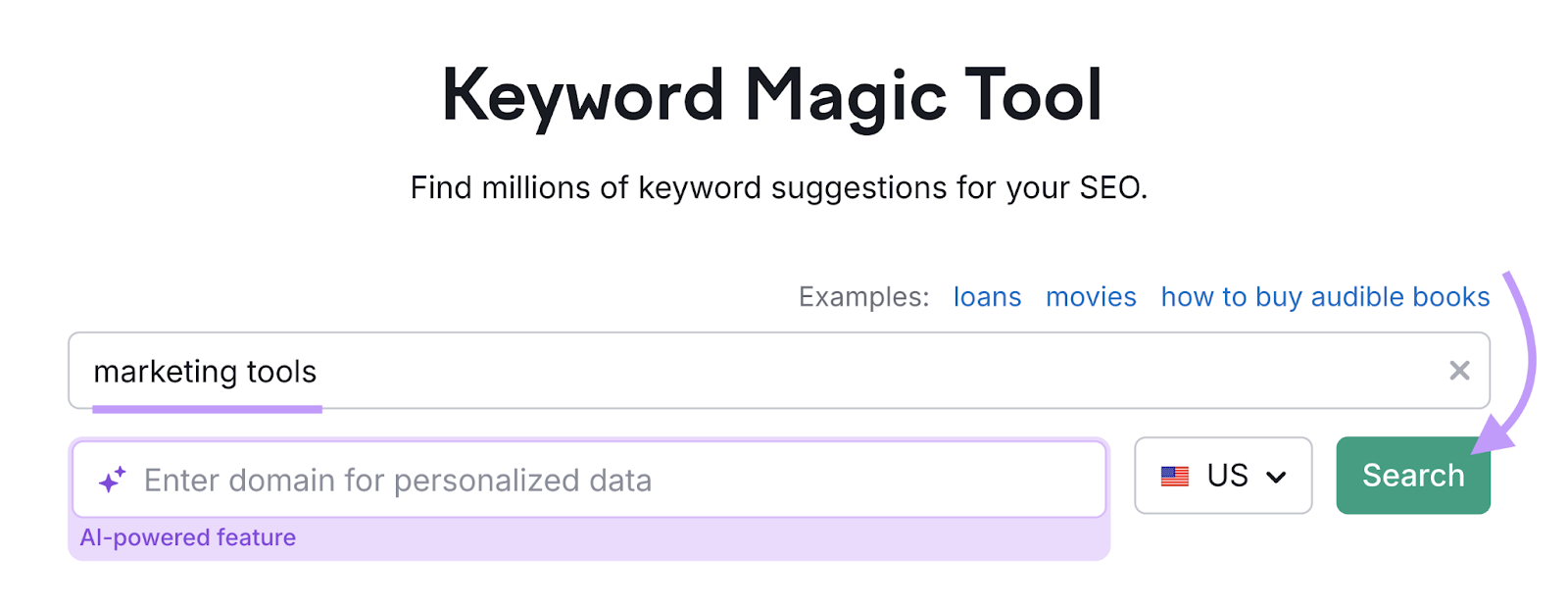
The tool will generate a list of related keywords, along with key metrics for each, such as:
- Intent: The reason behind a search
- Volume: The average number of searches a keyword gets per month
- Keyword Difficulty (KD %): A score from 0 to 100 indicating how hard it is to rank in the top 10 organic search results
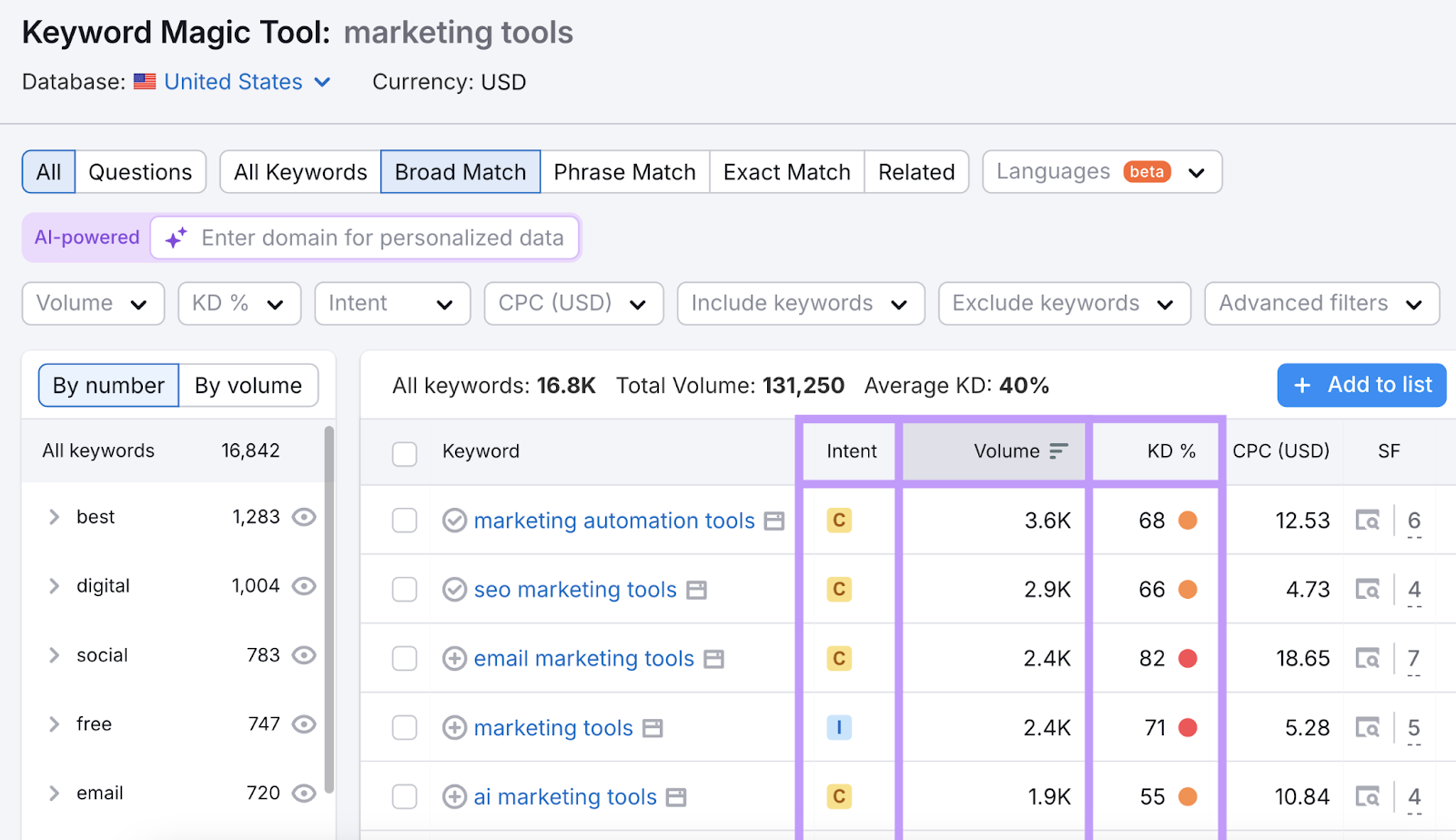
Find high-traffic secondary keywords using the "Volume" filter.
Click on it and enter "1,000" in the “To” field to get a list of keywords with at least 1,000 searches per month.
Then, select "Apply."
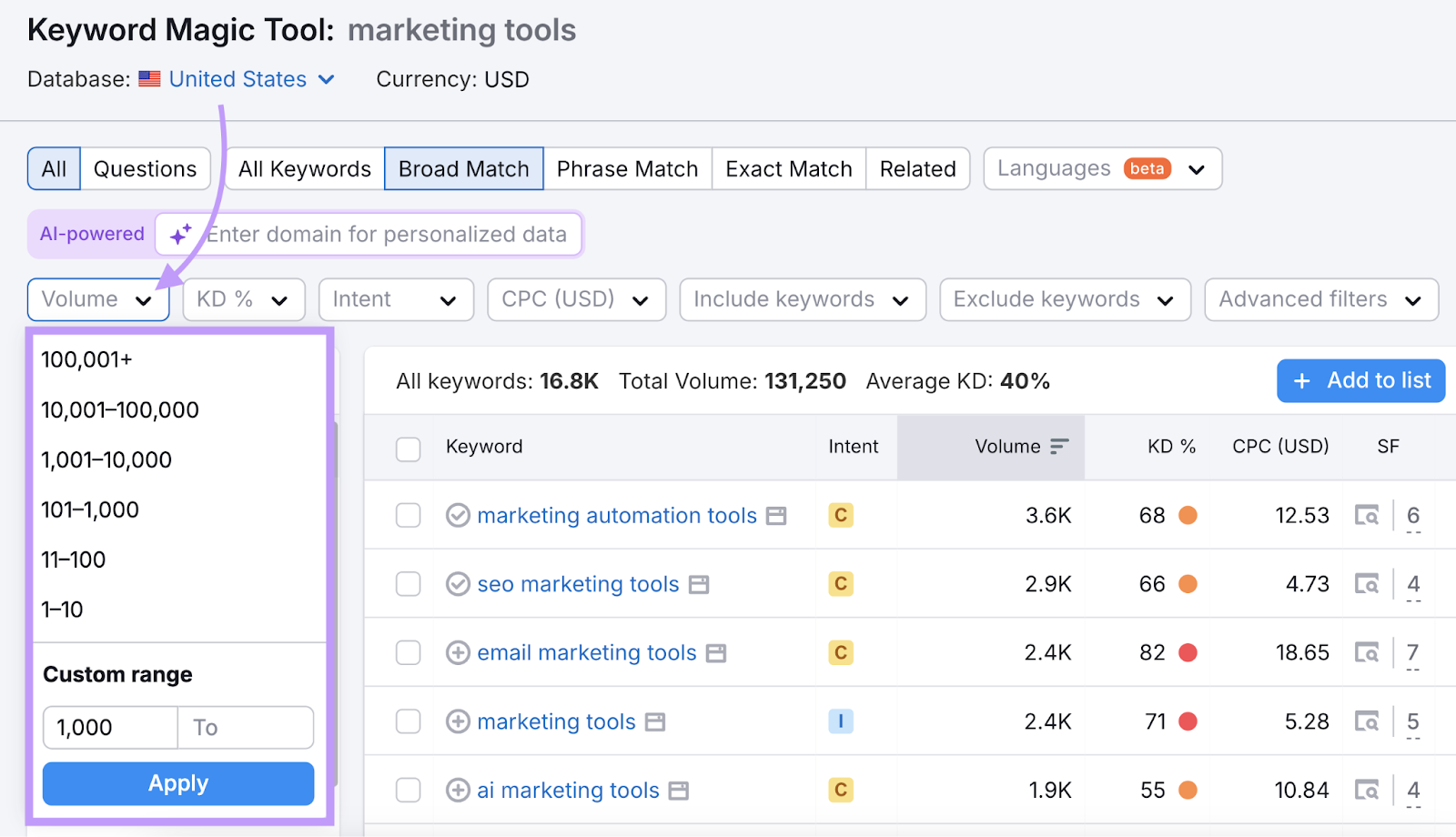
The tool will then show only keywords with volumes of at least 1,000. From there, manually review the list to find the most relevant keywords to target.
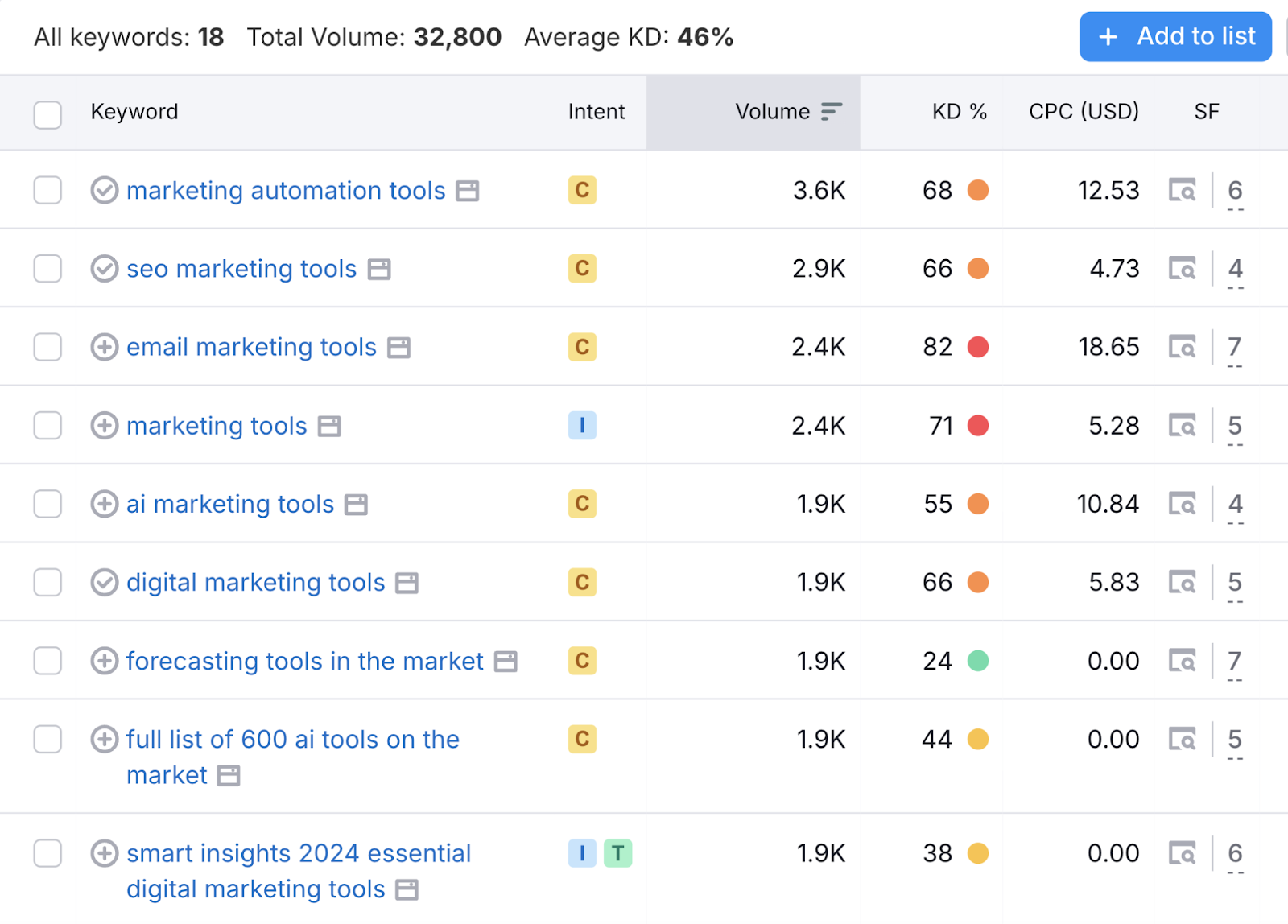
Then, sprinkle your chosen secondary keywords throughout the content you want to optimize.
3. Make Sure Your Content Is Easy to Understand
Keep readers engaged by making sure your content is skimmable, readable, and engaging.
Why?
Because most readers scan. And may leave a page if it’s hard to get what they want.
Here are some ways to ensure your content is easy to digest:
- Use a clear heading structure. A well-organized heading structure can improve the user experience andhelp search engines better understand your content. Break up your text with headers like H1, H2, and H3 to give your content structure.
- Prioritize active voice. Write in the active voice for more clarity and flow. Instead of framing your sentence as “The keyword was searched for by the reader,” say, “The reader searched for the keyword.”
- Apply the bottom line up front (BLUF) principle. This approach means presenting the most important information first. Answer readers’ questions right at the beginning of each section to help them find the information they need.
- Use bullet points. Bullet points help break up information and make it easier to scan for key details.
- Incorporate visuals. Images, infographics, and charts help break up text and make information more digestible.
- Improve the narrative flow. This is the smooth progression of ideas throughout your content. Read your post aloud to catch awkward phrasing, inconsistent rhythms, or any pacing issues.
4. Keep Your Content Up to Date
Keeping your content updated maintains accuracy, which can help establish you as a reliable source of information.
For example, if you published a post about influencer marketing trends in 2015, those trends are likely outdated. Updating the post with the latest trends for 2024 will make it more relevant and useful to readers.
Wondering how to find outdated content?
Use Semrush’s Position Tracking tool.
This tool lets you monitor your rankings.
A significant drop in rankings can be an indicator that the content is outdated.
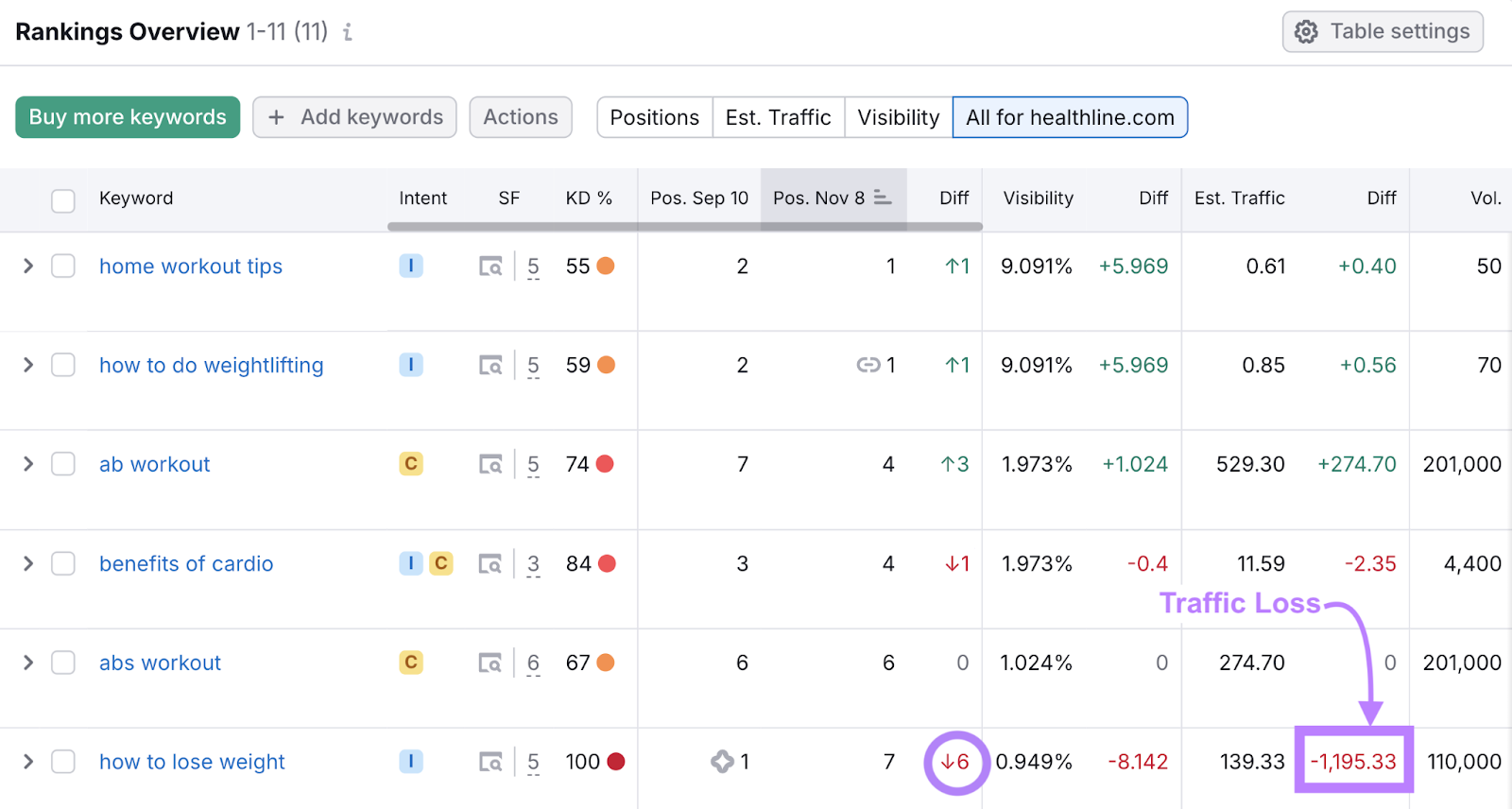
Once you find pieces that have seen a dip in rankings, update your content to keep it fresh and relevant.
Here are some tips:
- Fix broken links that may negatively impact the user experience
- Add new internal links to other relevant pages on your site
- Update or add visuals such as images, infographics, or charts
- Replace outdated information like statistics, product workflows, and examples
5. Optimize Your Content for On-Page SEO
On-page SEO involves making changes to your pages to improve their rankings.
For example, three important elements of on-page SEO are title tags, meta descriptions, and alt text.
Your title tag indicates what your main topic is, while your meta description summarizes your page content.
Alt text describes an image, so search engines can better understand images on your page—and so those using screen readers can understand what’s being shown.

For more on-page SEO recommendations, run your site through Semrush’s On Page SEO Checker.
The tool will generate a list of actionable suggestions to improve your website’s on-page SEO.
First, enter the URLs you want to optimize and the keywords you want to rank for. Then, click “Collect ideas.”
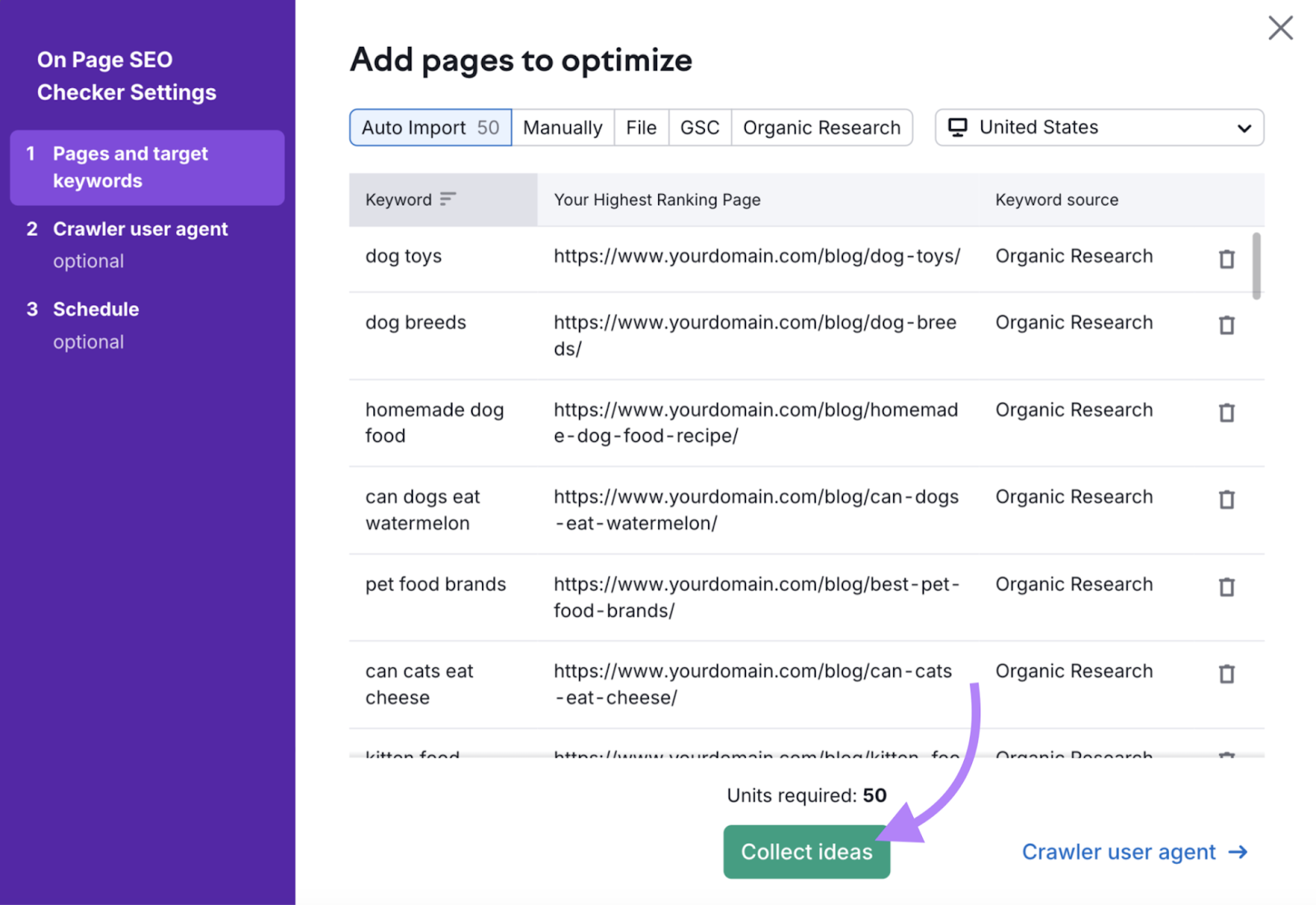
Once you’ve configured your project, go to the “Optimization Ideas” tab.
For every URL you’ve added, you’ll find ideas on how to improve its on-page SEO. This can range from technical fixes to content improvements.
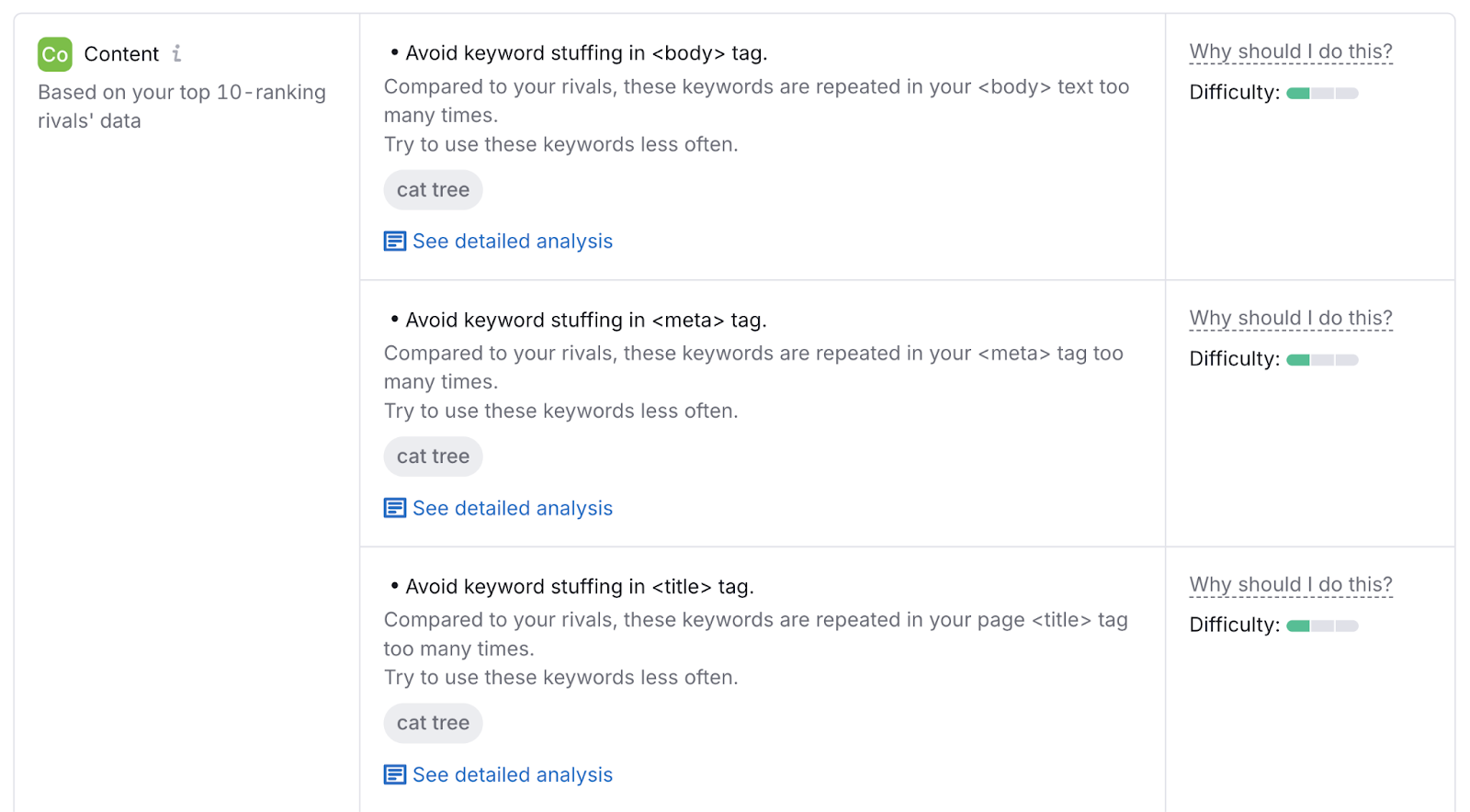
Implement these recommendations to help these pages rank higher in search engines.
6. Optimize Your Page for SERP Features
SERP features are enhanced results on Google’s search pages that go beyond the traditional organic listings—and ranking for them can improve your search engine visibility.
Some examples of SERP features include AI Overviews, featured snippets, local packs, People Also Ask, and knowledge panels.
They look like this on the SERP:
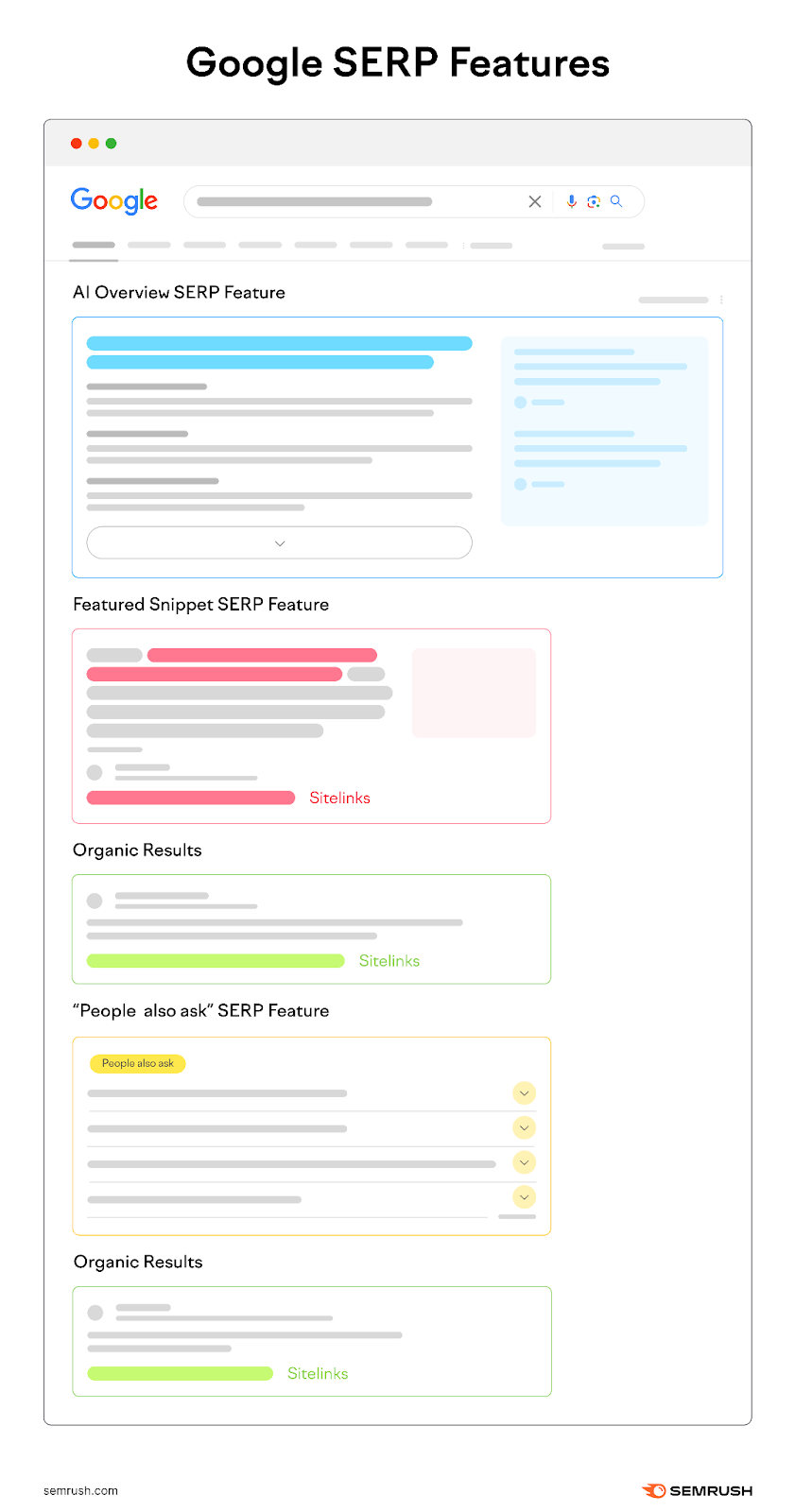
First, find out if your target keyword has any SERP features.
Enter it into the Keyword Overview tool. And scroll down the “SERP Analysis” section to see a list of ranking URLs. And which if any SERP features appear in search results.
For example, the SERP for the keyword “what is search intent” has an AI Overview, a featured snippet, and a People Also Ask section.
Click on the “View SERP” button to see what the results look like on Google.
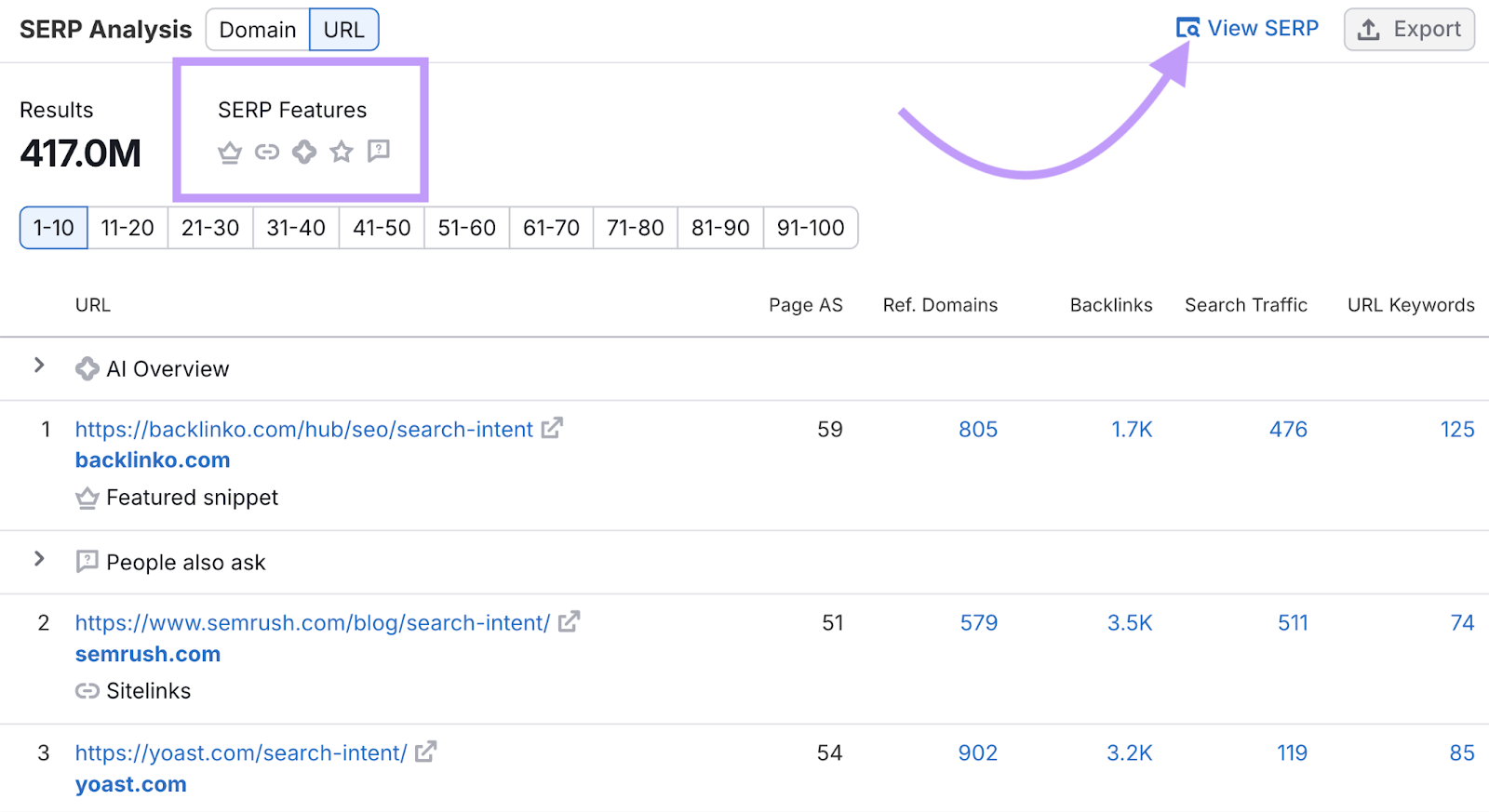
Next, optimize your content for the SERP feature you want to rank for.
For example, if your target keyword has a featured snippet, follow these best practices to rank for it:
- Use clear and concise language: Write in a straightforward way that directly answers the query. Avoid jargon and keep your sentences concise.
- Add a summary box: Start your content with a summary or answer to the query in 40-60 words. Google often pulls snippet content from these quick summaries.
- Incorporate question-based headers: Format your headers (H2s and H3s) as common question-based queries. For example, if your target keyword is “what is search intent,” use that exact keyword as a header to help Google identify relevant sections for snippets.
Read our guide on how to optimize for SERP features to learn more.
7. Add Semantically Related Keywords
Using semantically related keywords (terms that are conceptually linked to your main topic) in your content signals to search engines you’ve covered the topic comprehensively, which increases your chances of ranking higher in search results.
For example, if your target keyword is "how to grow tomatoes," semantically related keywords might include "organic gardening," "best soil for tomatoes," and "tomato plant care."
Use Semrush’s SEO Content Template to easily find semantically related keywords for your content.
Enter your target keyword and select your country. Then, click “Create content template.”

The tool will analyze the top 10 Google results to provide a list of semantic keywords.
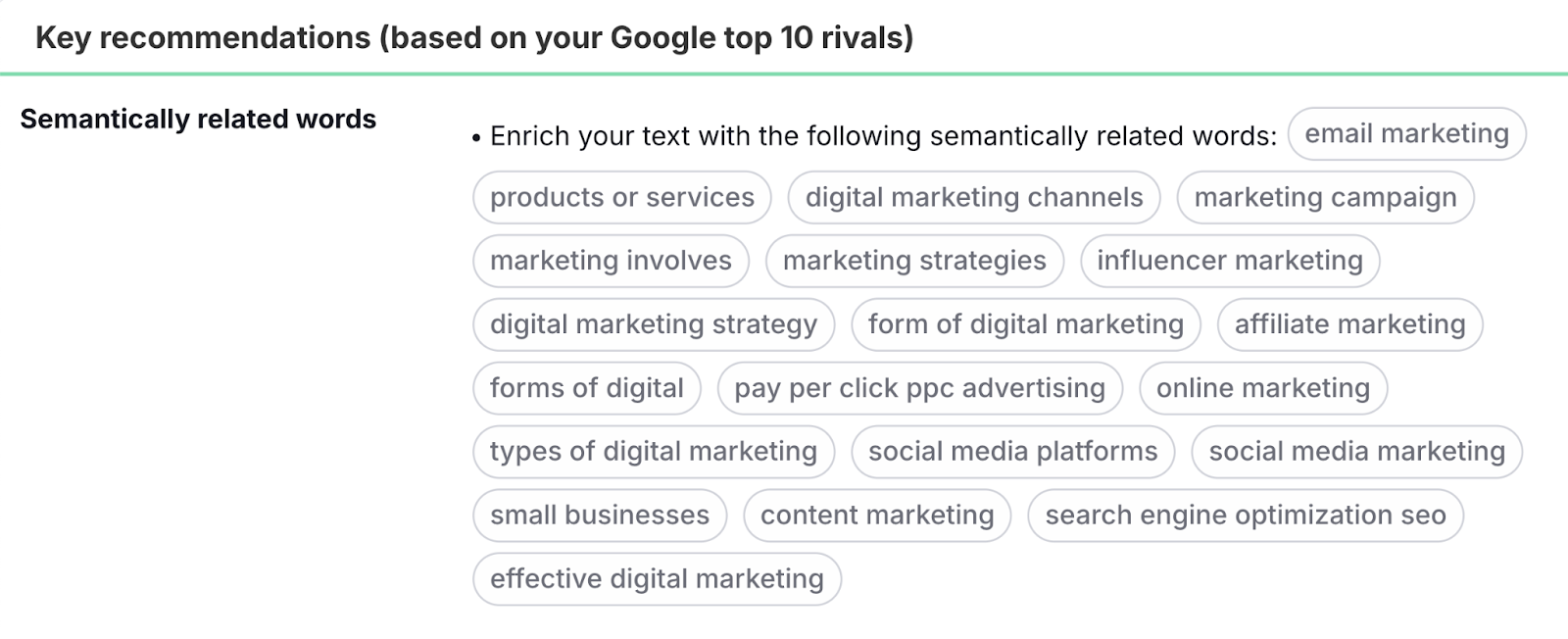
These aren’t the exact keywords you want to rank for, but they’re conceptually linked. So, incorporating these into your content can help you compete more effectively with your competitors.
8. Optimize Visual Content
Using visuals like images and videos can make your content more engaging because they break up text and make complex information easier to understand.
But they’re only effective if they’re properly optimized.
If your visuals are too heavy and slow down your page's loading time or aren’t accessible, they can hurt the user experience rather than improve it.
Here are a few image optimization tactics to consider:
- Add alt text to images: Include relevant keywords where it makes sense, but keep the description natural. For example, “Brown dog jumping over a white fence in a grassy field.”
- Compress file sizes to improve loading times: Use tools like TinyPNG or JPEG Optimizer to reduce file sizes without losing quality.
- Use descriptive file names that include keywords: Instead of generic file names like “image123.jpg,” rename your files using descriptive names that include your target keywords. For example, “seo-strategy-guide.jpg.”
- Provide captions or a transcript (for videos): This makes the content accessible to more users and helps search engines understand what the video is about
Further reading: Image SEO: How to Optimize Images for Search Engines & Users
9. Satisfy Google’s E-E-A-T Guidelines
Google aims to prioritize content that demonstrates the Experience, Expertise, Authoritativeness, and Trustworthiness (E-E-A-T) framework.
Here’s how to optimize content for E-E-A-T:
Include Author and Contributor Bios
Hire writers and team members with industry experience and showcase that using bio pages.
Consider including years of experience (e.g., 10). And in what field the contributor specializes in (e.g., content marketing and SEO).
This shows the audience the writer has the experience and expertise to back up their statements.
Include Expert Insight
Interview subject matter experts and use their quotes to add value and insights to your content—or include experts in the review process.
Like this Semrush blog post:
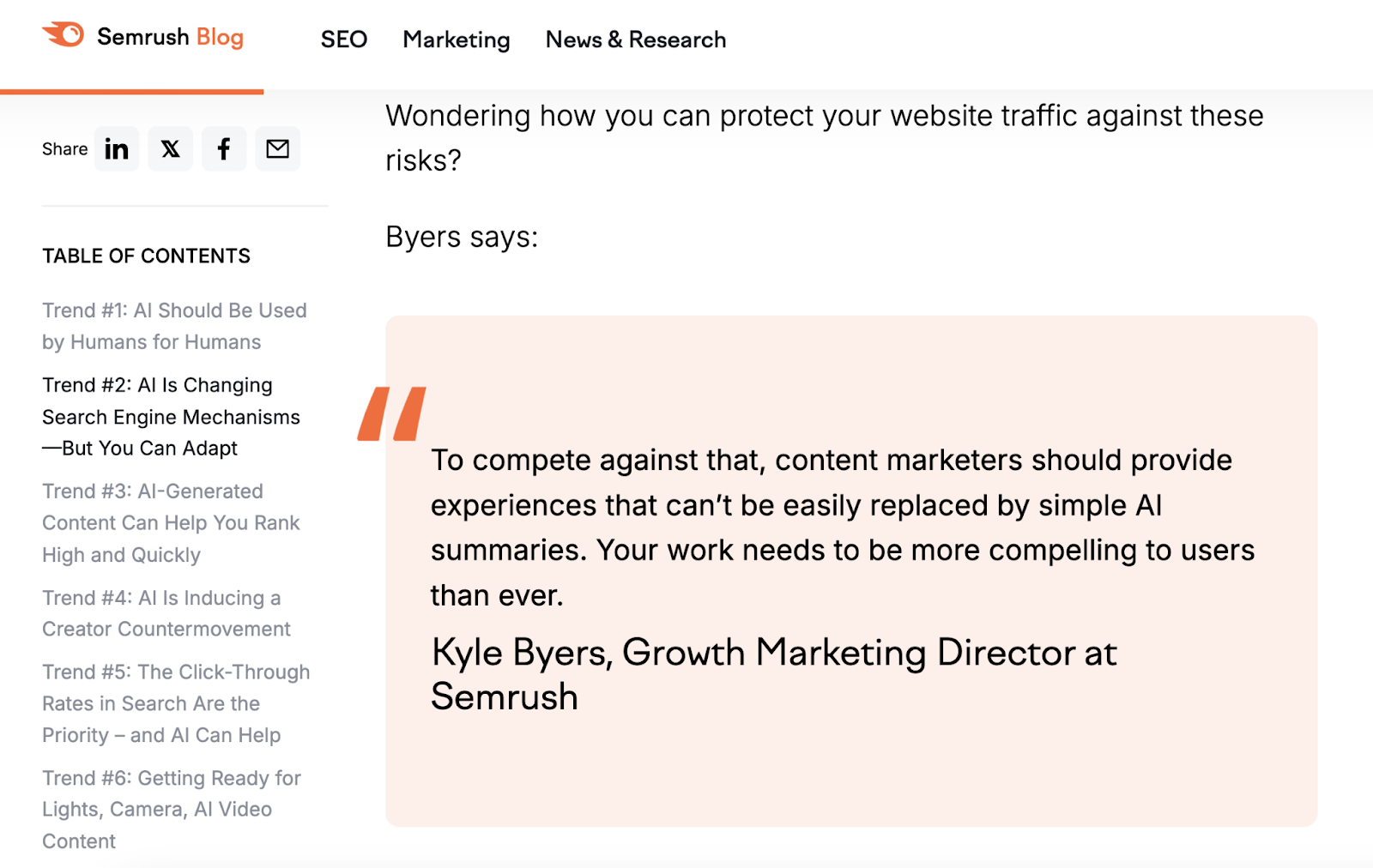
Use Credible Sources
Back up statements and statistics with reliable research and reputable sources.
And be sure to link to official sources like:
- Industry-specific websites and blogs
- Academic journals and research papers
- Government publications and reports
- Trusted news outlets
10. Cover the Topic Comprehensively
Including all important ideas gives readers a complete understanding of the topic and reduces the likelihood of readers going back to search engines for more information.
It may also signal to search engines like Google that your page fully satisfies the user's search intent, which can increase its chances of ranking higher in search results.
What should you add to your content?
Start with a SERP analysis, which involves examining what your competitors have already covered. So you can identify any subtopics top-ranking pages address that you don’t.
Use Semrush’s Keyword Overview tool to perform a SERP analysis.
Launch the tool, enter your target keyword, and select a country. Then, click “Search.”
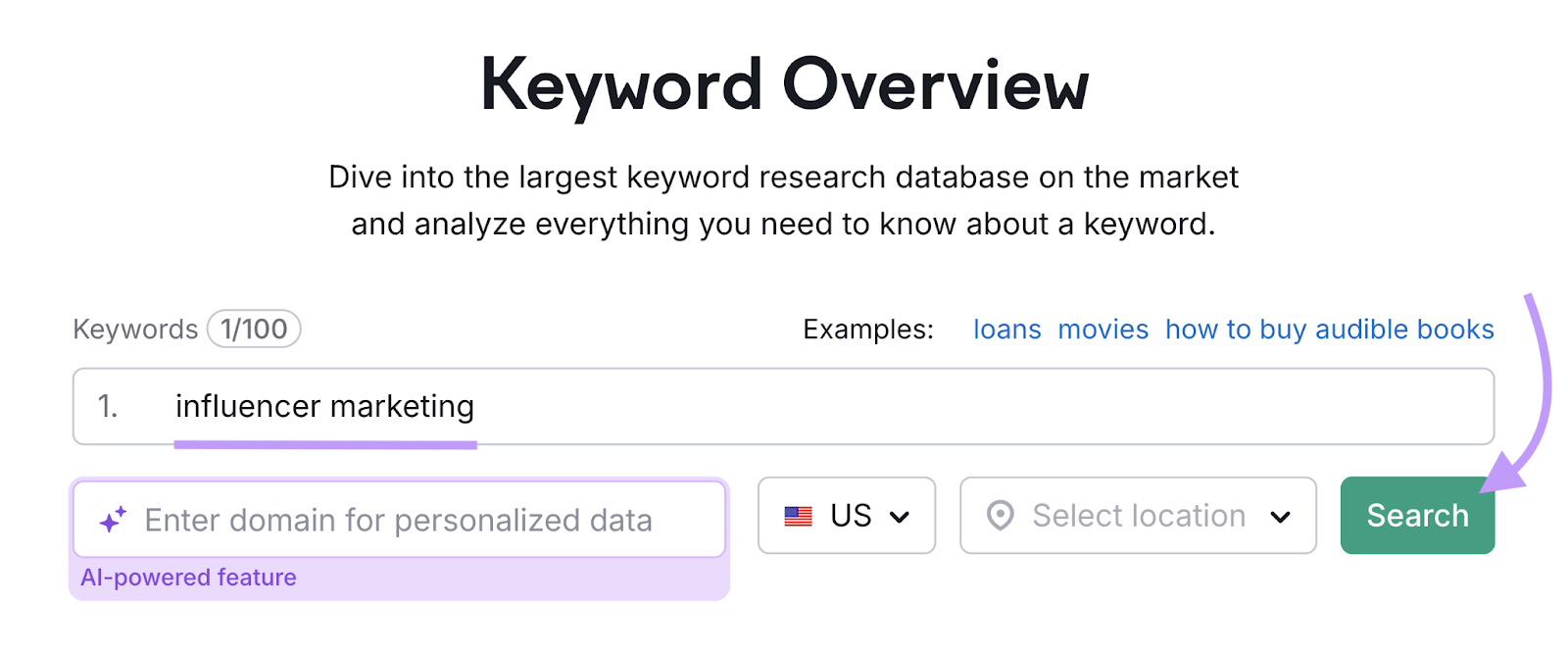
Scroll to the bottom to find the SERP analysis tab. Here, you’ll see the top-ranking pages for the location you’ve set, along with traffic data, the number of backlinks, and other metrics.

Once you have this information, visit these top-ranking pages one by one and manually examine their content.
Look for specific details like:
- Subtopics: What are your competitors covering that you haven’t? Are there areas where their content goes deeper, or are there missed opportunities you can capitalize on?
- Use of visuals: How many images, charts, or videos do they include in their posts?
But go beyond simply replicating what's already ranking in the SERPs. Because offering unique content will set you apart from your competitors.
Here are some tips:
- Offer a fresh perspective: Instead of rehashing the same points, provide a new angle or personal insights that give readers something different
- Include unique examples: Present real-world examples that haven’t been widely covered
11. Include Original Research
Original research is unique data that comes directly from your company and can't be found elsewhere—and publishing it can lead to backlinks (links on other sites to yours) that boost SEO.
This includes survey results, case studies, and platform-specific data.
This type of research makes your content more link-worthy and shareable.
For example, Wistia published its State of Video report in March 2024, which has earned more than 1K backlinks from over 460 referring domains.
Here are some ways to include original research:
- Surveys: Use online tools like Google Forms or SurveyMonkey to collect responses from website visitors
- Interviews: Conduct one-on-one interviews with customers, industry experts, or employees to gain deeper insights
- Case studies: Share examples of customer successes or challenges and how your product or service helped
- Platform analytics: Analyze your platform's data to find interesting trends
How to Optimize Content for Conversions
Optimizing your content for conversions (desirable actions like signing up for a newsletter or filling out a contact form) increases the chances they’ll take that desired next step.
Here’s are a few ways to do that:
12. Demonstrate the Value of Your Product or Service
Showing your product or service in action lets you demonstrate how it addresses the specific challenge readers may be facing.
That can encourage them to make a purchase—especially if they’re on the cusp of making a decision.
For example, Semrush blog posts often contain workflows. These workflows show readers how Semrush can tools to solve their problems.
Like this one showing readers how to find voice search keywords using Semrush’s Keyword Magic Tool.
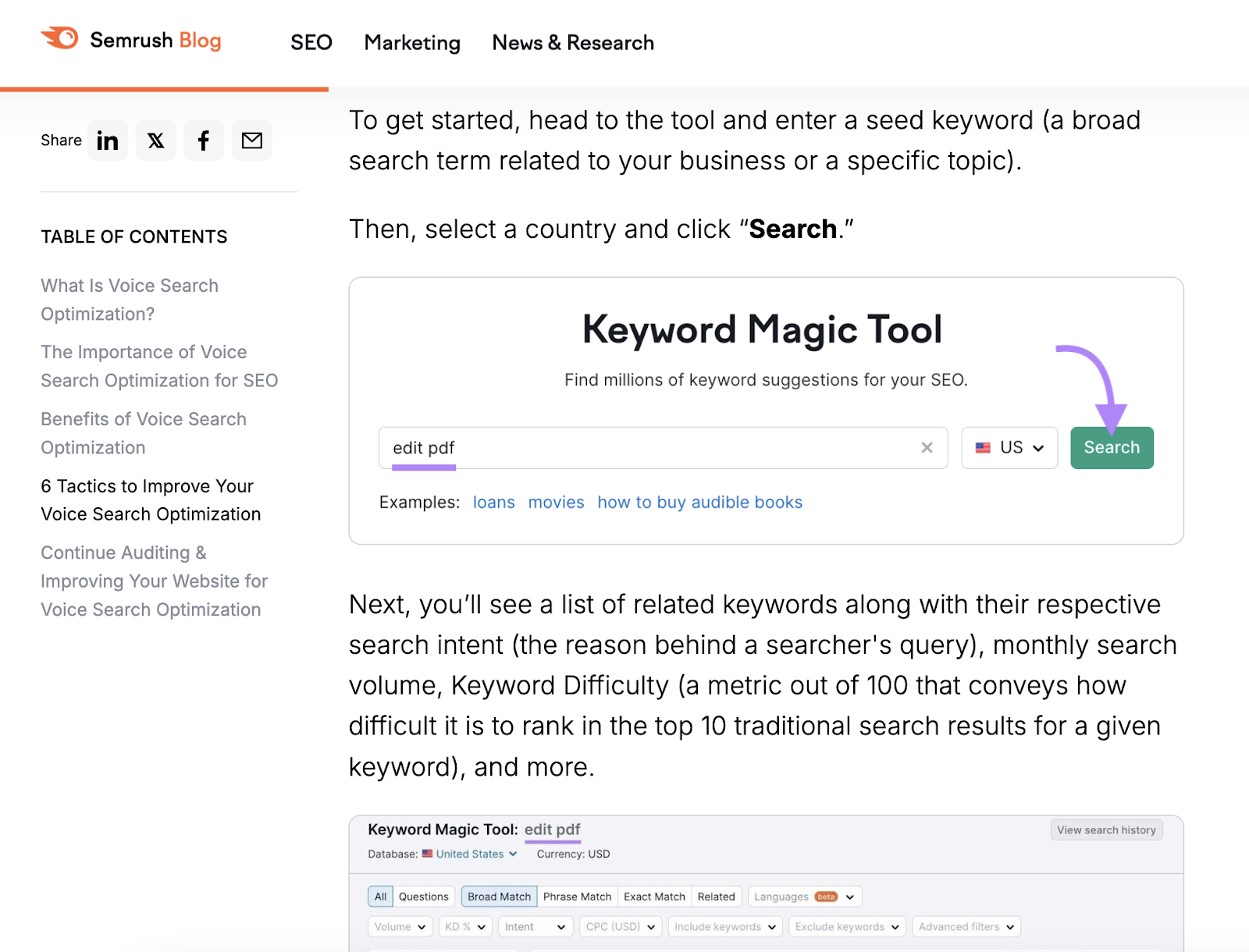
However, it’s important not to overdo it.
Only include these mentions where they naturally fit and genuinely solve readers’ problems.
13. Add Social Proof to Build Trust
Including social proof like customer testimonials, success stories, or case studies shows potential customers that others have had positive experiences with your product or service, making them more likely to trust you.
For example, if you're writing about the best influencer marketing campaigns, you could include a case study showing how a brand used your influencer search software to find the right influencers. Followed by a testimonial from the customer.
A case study with a direct customer quote can influence whether readers convert.
Insider seamlessly included five-star reviews in the below blog post, which addresses a major pain point for their target audience–MarTech implementation.
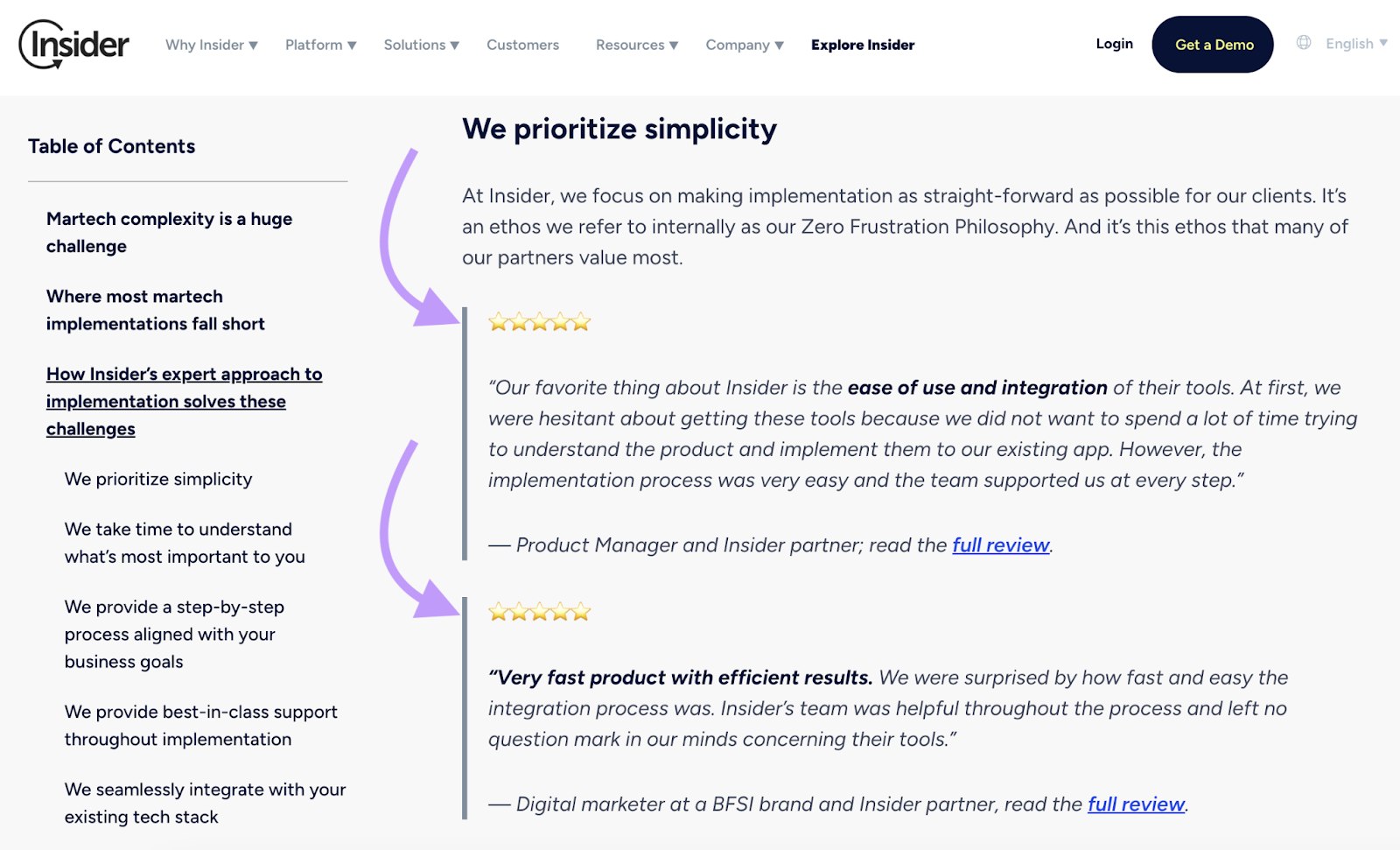
14. Use Calls to Action
A call to action (CTA) is a prompt that tells users what to do next, and they can increase the chance of readers converting or taking the action you want them to take.
Some examples of CTAs include “Sign Up Now,” “Contact Us,” and “Buy Now”—depending on the desired action.
For example, this CTA on the Semrush blog uses the CTA “Try for Free.” Along with text that explains the benefits of signing up to try One2Target.

Optimize Your Content to Get Better Results
Optimizing your existing content can improve its search engine performance and drive more conversions.
The content optimization techniques we’ve shared in this post will guide you in the right direction.
For even better results, pair them with Semrush tools. You can try them for free.
